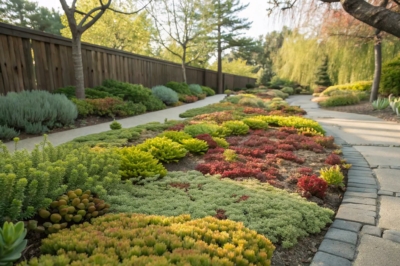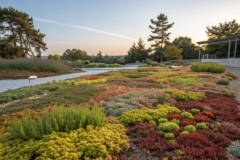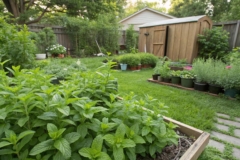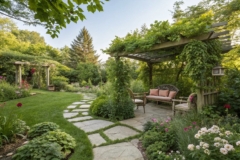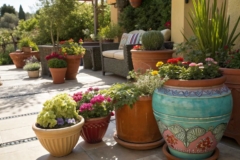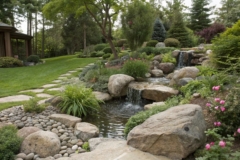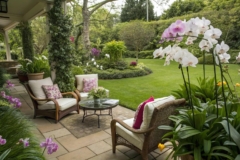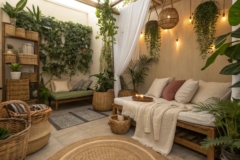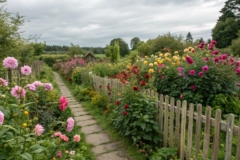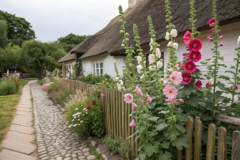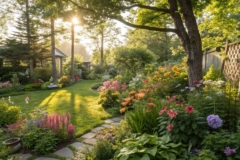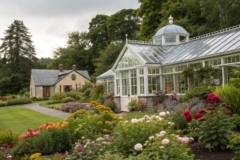1. Sedum as Ground Cover

Transform your garden floor with sedum as a lush, colorful ground cover. I’ve seen how these resilient plants can fill gaps beautifully, adding a textured carpet that thrives even in challenging spots.
These products might help:
- Mixed Sedum Seeds Pack: Transform your garden with vibrant sedum seeds for easy-to-grow, drought-tolerant ground cover.
- Organic Potting Soil for Succulents: Boost growth with nutrient-rich, organic soil perfect for your sedum ground cover plants.
- Garden Hand Trowel for Planting: Effortlessly plant your sedum with a durable, ergonomic hand trowel for garden enthusiasts.
2. Low Maintenance Sedum Garden
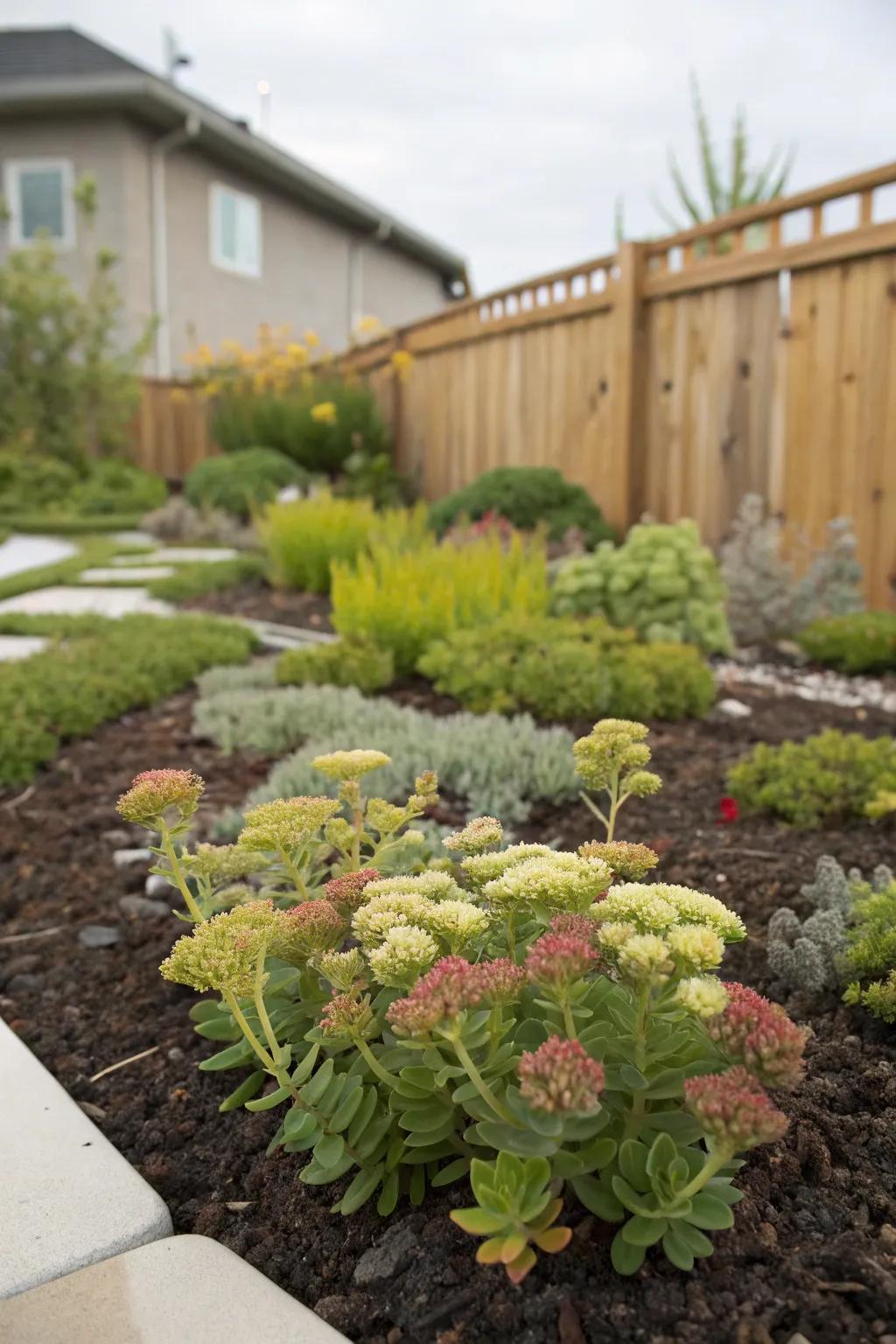
Design a low-maintenance garden with drought-tolerant sedums. These hardy plants are perfect for those who love greenery but lack time for daily care.
Check if these fit your needs:
- Drought-Tolerant Sedum Plant Collection: Enhance your garden’s beauty with easy-care, drought-tolerant sedum plants. Perfect for busy gardeners.
- Garden Soil for Succulents and Cacti: Ensure optimal growth for your succulents with well-draining garden soil. Boost plant health effortlessly.
- Automatic Drip Irrigation Kit: Simplify watering with an efficient drip irrigation system designed for low-maintenance gardens.
3. Sedum Spillover Effect
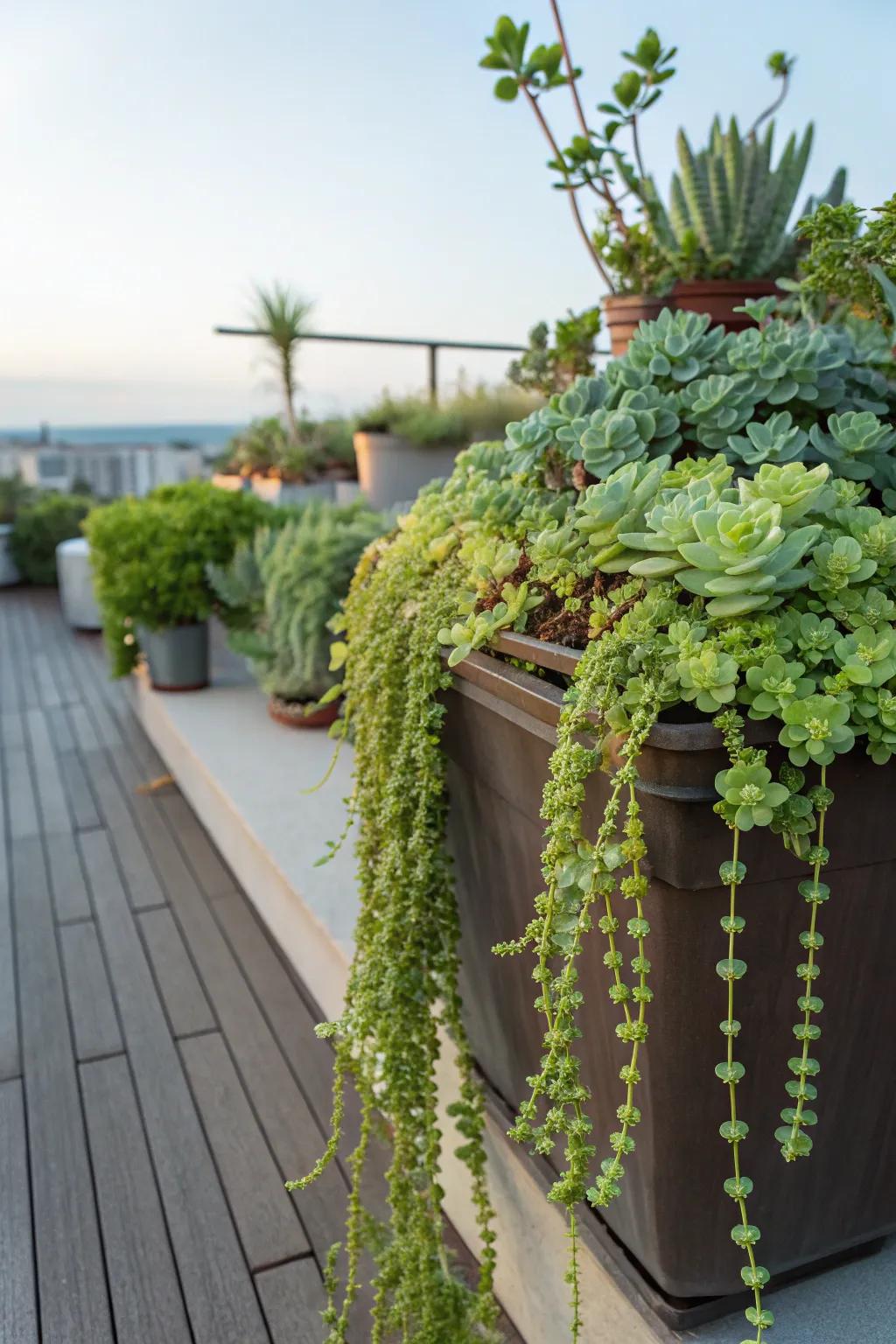
Let sedums spill over the edges of containers for a lush, dramatic effect. This cascading beauty is a favorite trick in my own garden for adding volume and interest.
Might be a good match:
- Large Ceramic Planters: Enhance your garden’s look by using large ceramic planters for dramatic sedum spillover effects.
- Hanging Garden Hooks: Add depth to your garden with hanging garden hooks for cascading sedum displays.
- Premium Potting Mix for Succulents: Ensure healthy growth with a premium potting mix designed specifically for succulents and sedums.
4. Sedum Water-Wise Garden
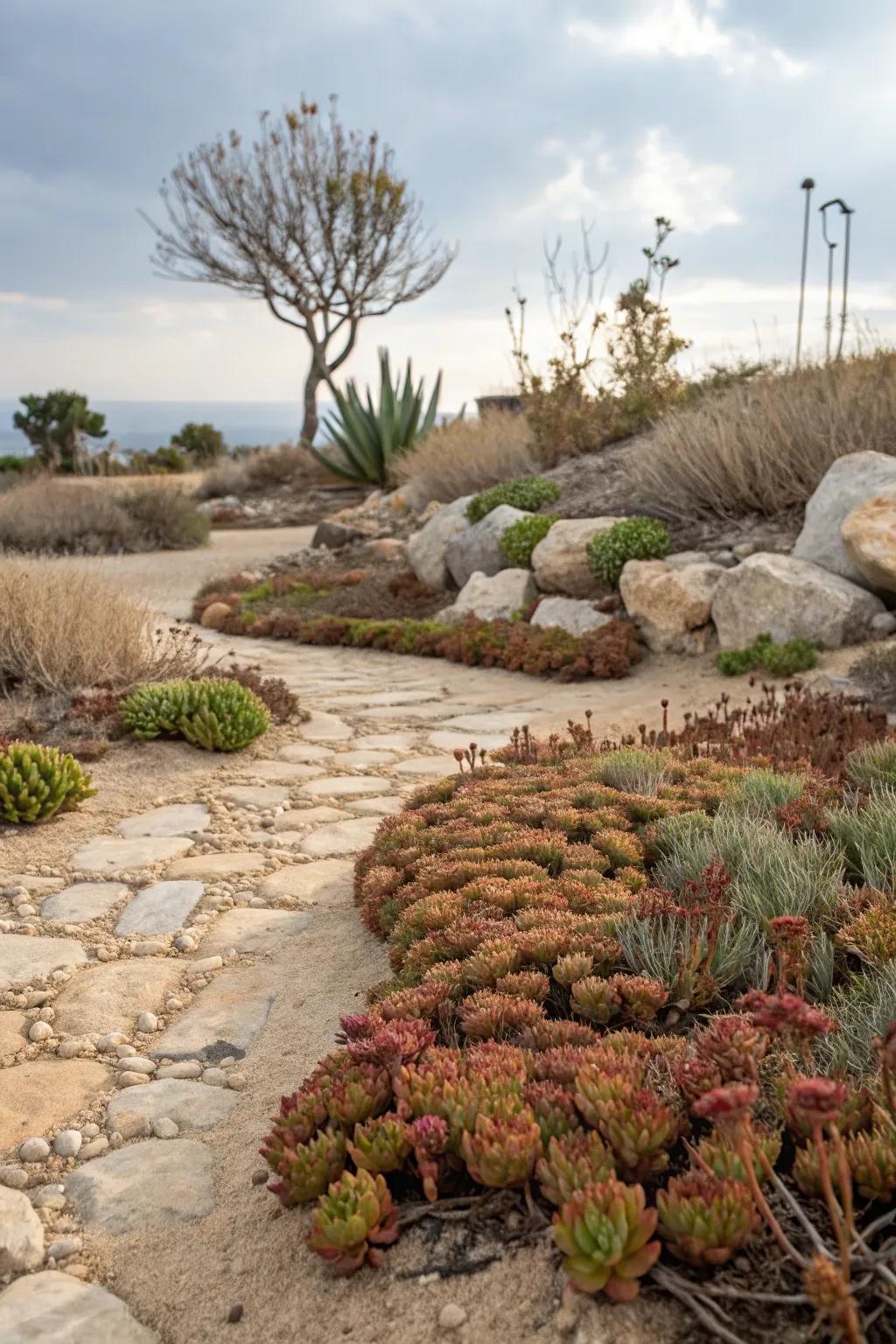
Design a water-wise garden with sedums, perfect for dry climates. Their drought tolerance ensures lush greenery without the need for constant watering.
Possibly handy products:
- Organic Sedum Plant Mix: Enhance your garden with a diverse sedum mix, ideal for low-water landscaping solutions.
- Drought-Tolerant Soil: Maximize plant health with soil designed for water retention and minimal irrigation needs.
- Decorative Landscape Pebbles: Add visual appeal and reduce water evaporation with stylish landscape pebbles in your garden.
5. Sedum Mosaic Garden
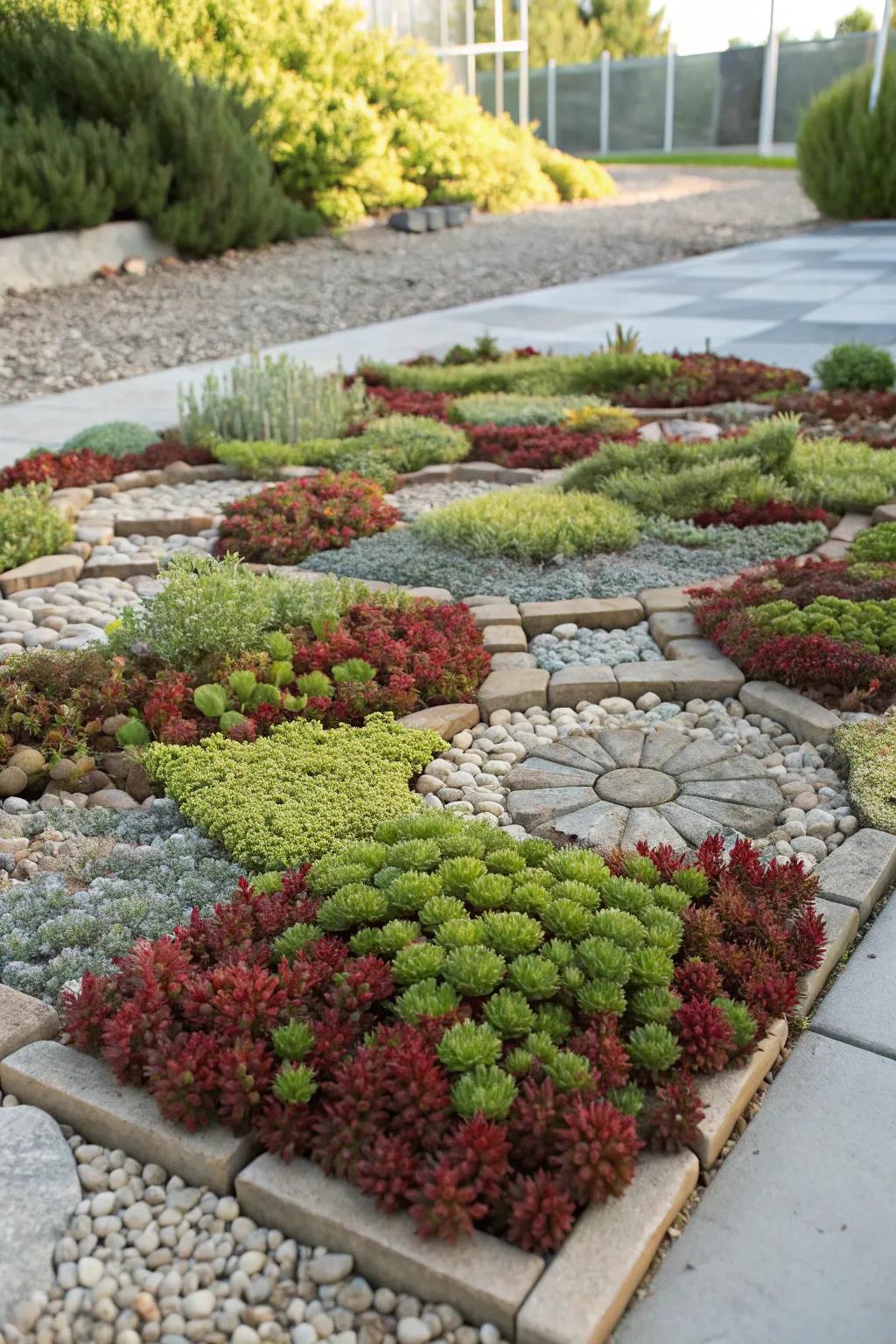
Compose a living mosaic with different colors and textures of sedum. This creative approach can turn any garden bed into a work of art.
You might give these a try:
- Sedum Stonecrop Plant Collection: Transform your garden into a colorful mosaic with vibrant sedum varieties. Easy to plant and maintain.
- Decorative Landscaping Stones: Enhance your mosaic garden with decorative stones for texture and visual appeal.
- Garden Edging Blocks: Define your mosaic garden’s borders with sturdy and stylish garden edging blocks.
6. Sedum as Living Art
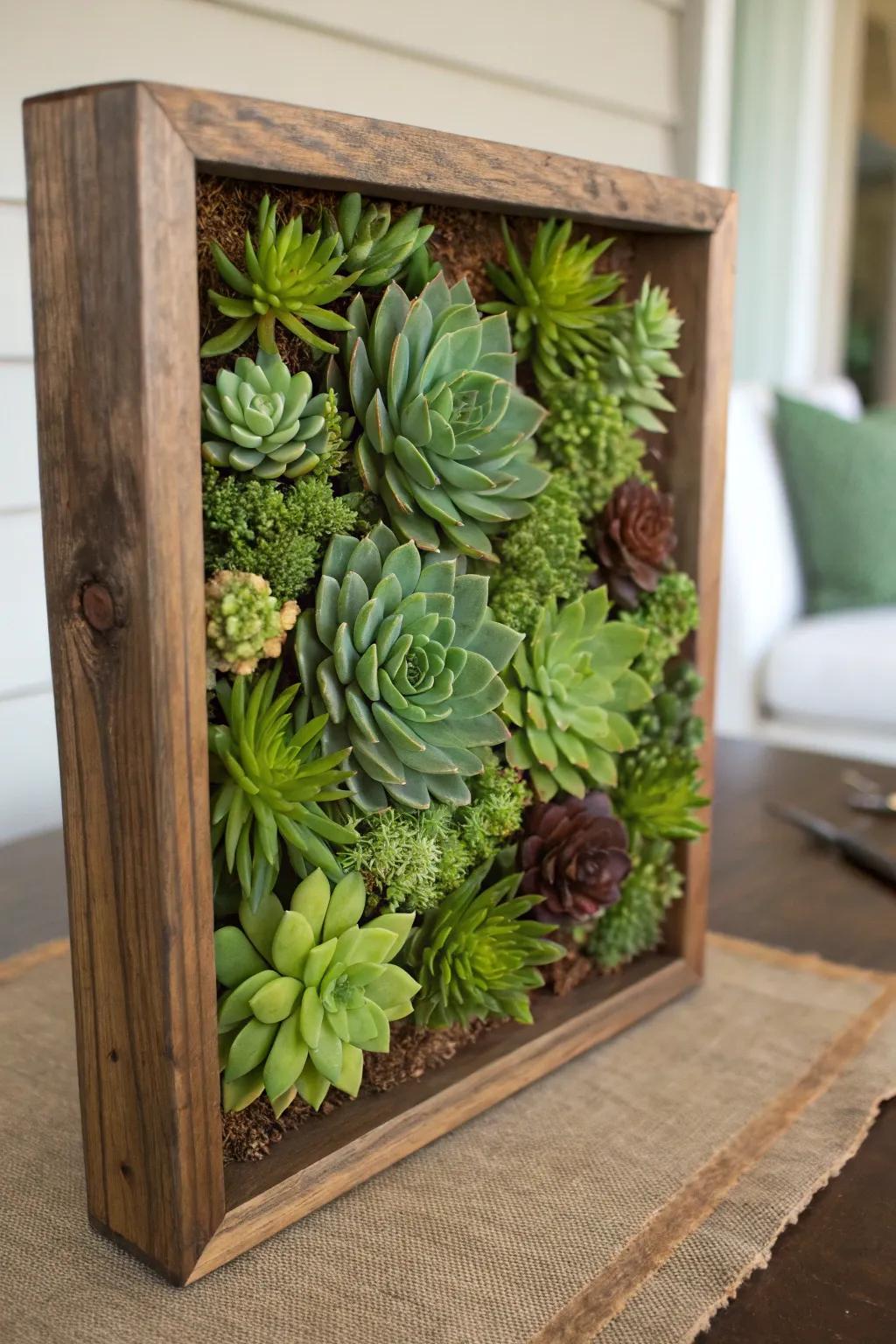
Craft a piece of living art by arranging sedums in frames or containers. This eye-catching display can add a unique touch to any indoor or outdoor space.
These products might be useful:
- Wall-Mountable Wooden Planter Frame: Enhance your space with a rustic wooden frame, perfect for vibrant sedum arrangements.
- Assorted Sedum Seeds or Cuttings: Start your living art with a mix of colorful sedum seeds or cuttings today.
- Indoor Plant Grow Light: Ensure your sedums thrive indoors with an adjustable grow light. Start brightening your space now.
7. Rock Garden Companion
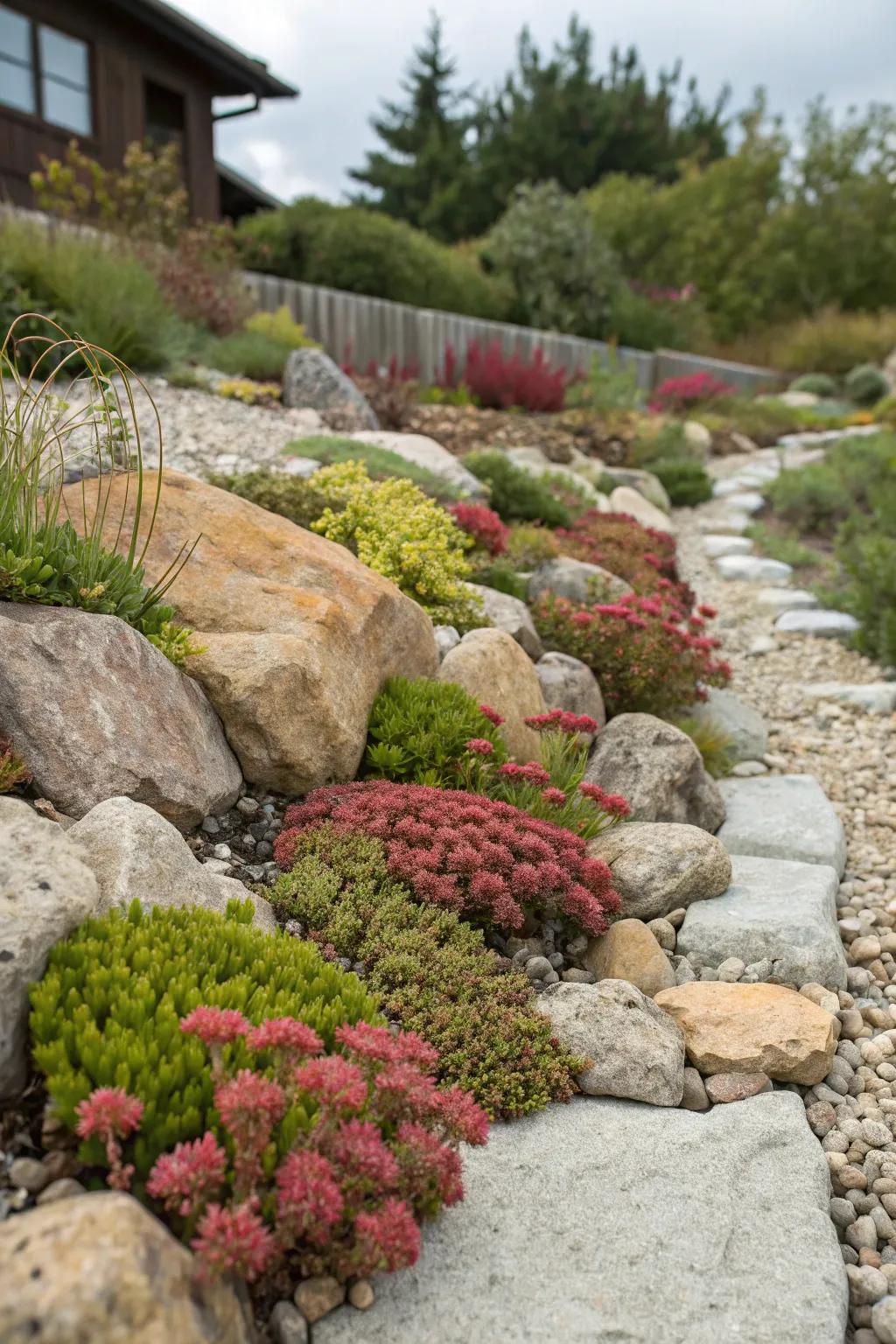
Pair sedums with rocks to create a charming rock garden that feels straight out of a fairytale. Their ability to nestle into crevices and thrive in rocky conditions is simply magical.
A few helpful options:
- Rock Garden Stone Set: Enhance your garden’s beauty with natural stones that blend seamlessly with sedums.
- Garden Hand Trowel: Effortlessly plant sedums in rocky crevices with a durable, ergonomic hand trowel.
- Succulent Soil Mix: Boost sedum growth with nutrient-rich, well-draining soil mix designed for succulents.
8. Sedum Fairy Garden
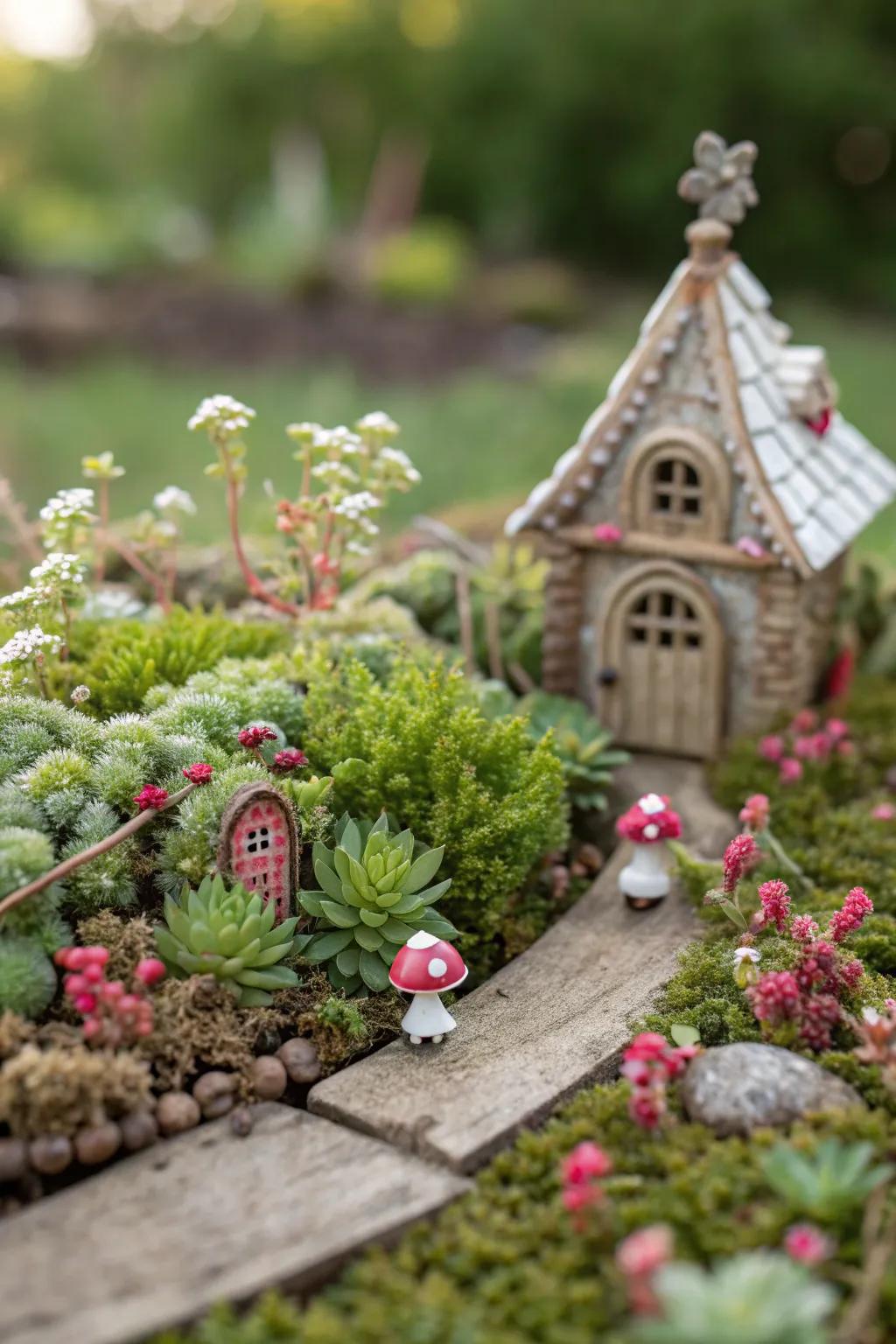
Create a whimsical fairy garden using miniature sedum varieties. This tiny world is not only charming but a fantastic project for the young and young-at-heart.
A few choices to try:
- Miniature Fairy Garden Accessories Set: Transform your sedum garden with enchanting miniatures, adding magic to every corner.
- Fairy Garden Cottage Figurine: Enhance your garden’s charm with a quaint fairy cottage, inviting fairies to settle.
- LED Solar Fairy Lights: Illuminate your fairy garden with solar lights, creating a magical twilight ambiance.
9. Artistic Sedum Features
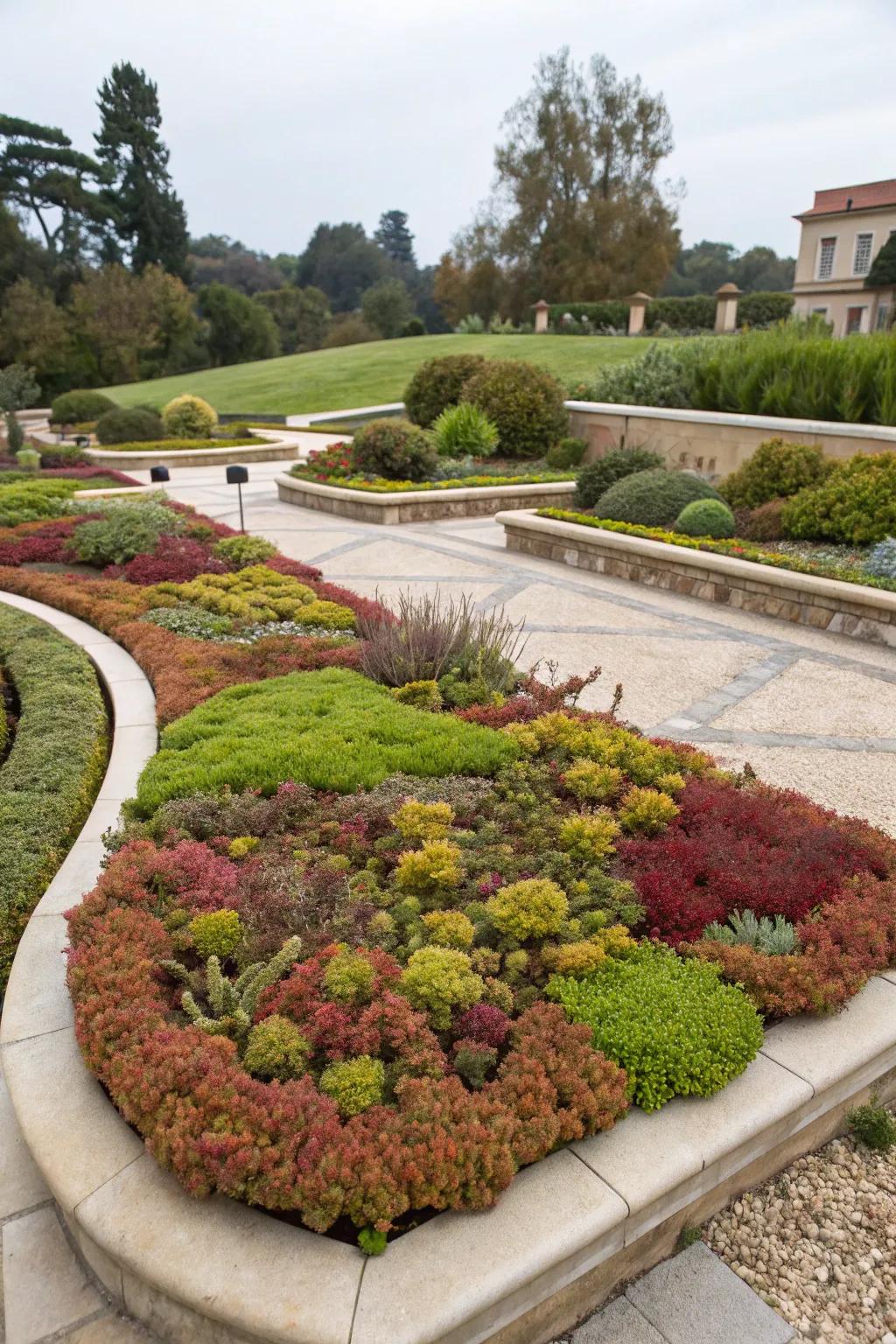
Incorporate sedums into artistic garden features for a creative twist. Their sculptural forms can enhance any decorative display.
A few suggestions:
- Stone Garden Planters: Enhance your garden’s beauty with stone planters, perfect for highlighting vibrant sedum arrangements.
- Decorative Pebbles for Landscaping: Use decorative pebbles to create stunning contrasts and textures around your sedum displays.
- Metal Garden Sculptures: Add a sculptural focal point in your garden to complement the organic forms of sedums.
10. Mixed Plantings with Sedums
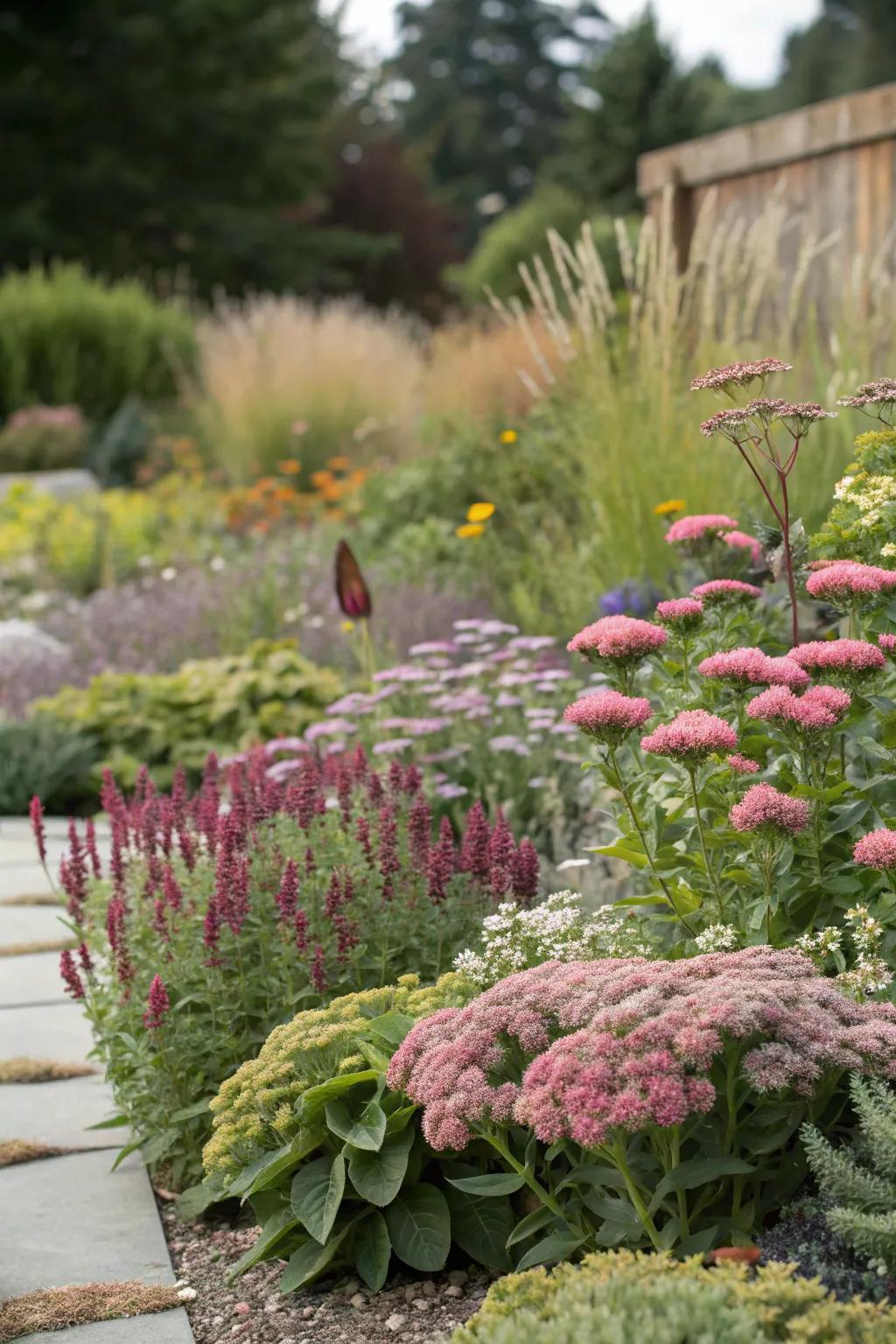
Combine sedums with other perennials for a textural wonderland. Their fleshy leaves provide contrast and complement the delicate blooms of other plants.
Possibly helpful picks:
- Perennial Plant Collection: Enhance your garden with diverse perennials that beautifully complement your vibrant sedum plants.
- Garden Mulch Chips: Protect your mixed plantings with quality mulch, adding nutrients and minimizing weeds effortlessly.
- Outdoor Garden Statues: Add visual interest and focal points among your sedum and perennial plantings with stylish statues.
11. Sedum in Containers
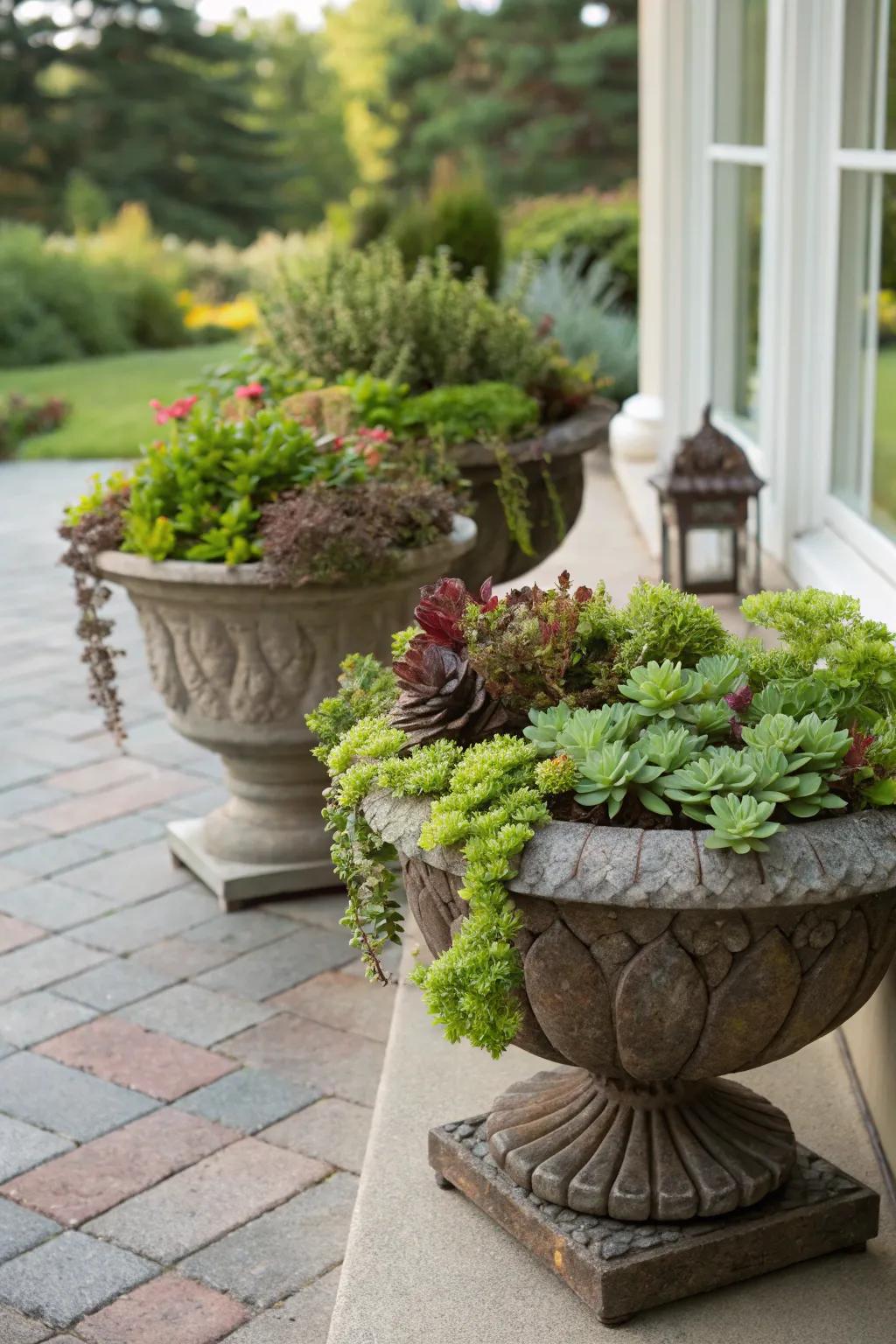
Design container gardens with sedums for a portable splash of color. They’re perfect for decks, patios, and any place you’d like to add some greenery.
You might like:
- Decorative Stone Planter Pots: Enhance your patio with elegant stone planters for a classic, charming look.
- Premium Potting Mix for Succulents: Give your sedums the best start with nutrient-rich soil tailored for succulents.
- Outdoor Garden Lanterns: Set the mood on your patio with stylish, weather-resistant garden lanterns.
12. Sedum Underfoot
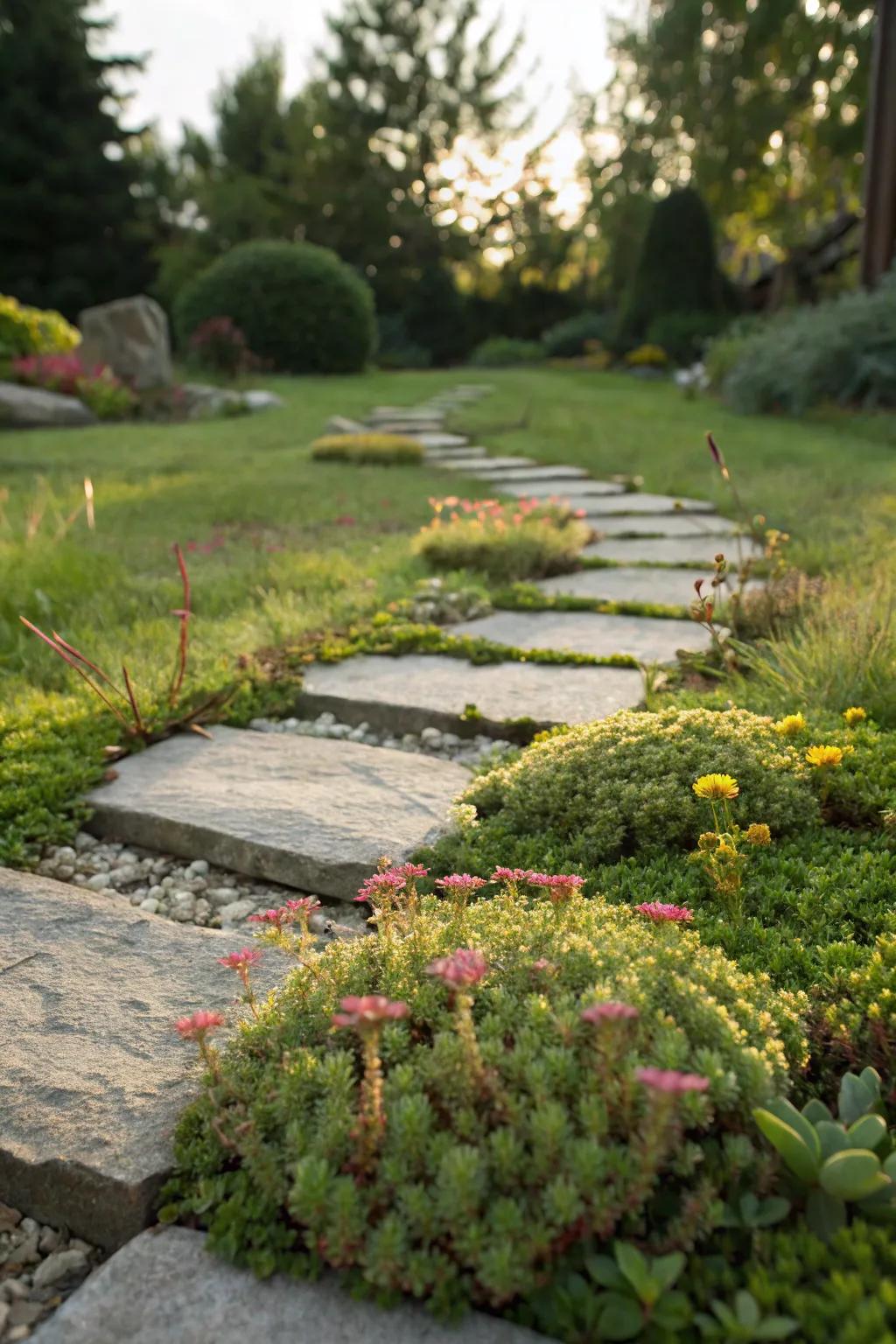
Use sedum in between stepping stones to create a soft, lush underfoot. It’s a delightful surprise for those wandering through your garden.
Useful items to consider:
- Sedum Ground Cover Mix: Enhance your garden path with versatile sedum ground cover for a soft, lush effect.
- Stepping Stones: Add charm to your garden with stepping stones that perfectly complement sedum underfoot.
- Soil pH Test Kit: Ensure your soil is ideal for sedum by using a reliable pH test kit.
13. Colorful Sedum Collection
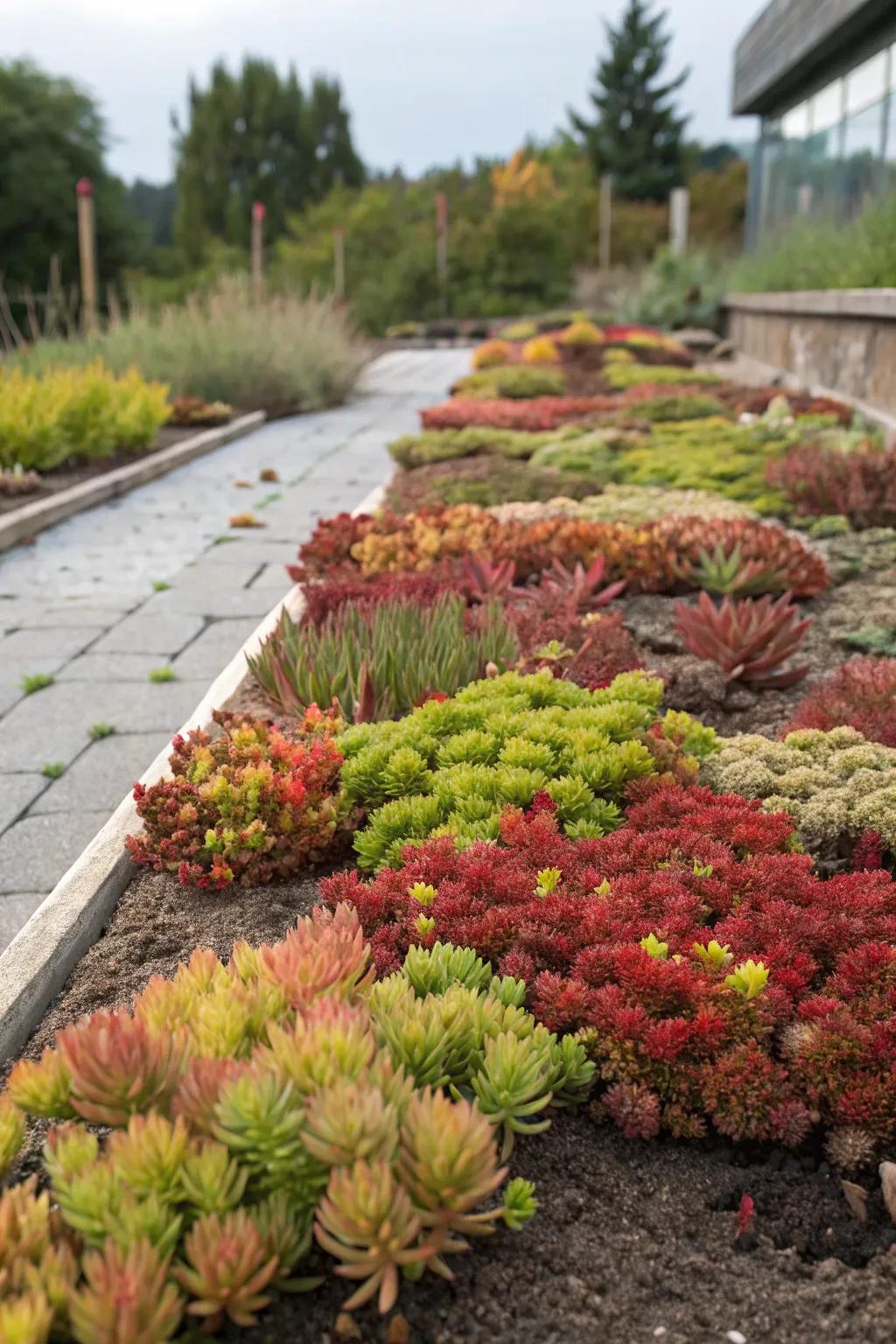
Embrace the spectrum with a collection of sedum in various colors. This approach adds a dynamic visual interest that changes with the seasons.
Try these:
- Mixed Sedum Seeds: Enhance your garden’s beauty with vibrant sedum varieties. Create seasonal color changes effortlessly.
- Garden Soil for Succulents: Provide optimal growth conditions for your sedum with specialized succulent soil. Ensure healthy, colorful blooms.
- Decorative Planter Trays: Display your colorful sedum collection beautifully with these elegant planter trays. Perfect for patios.
14. Sedums on Slopes
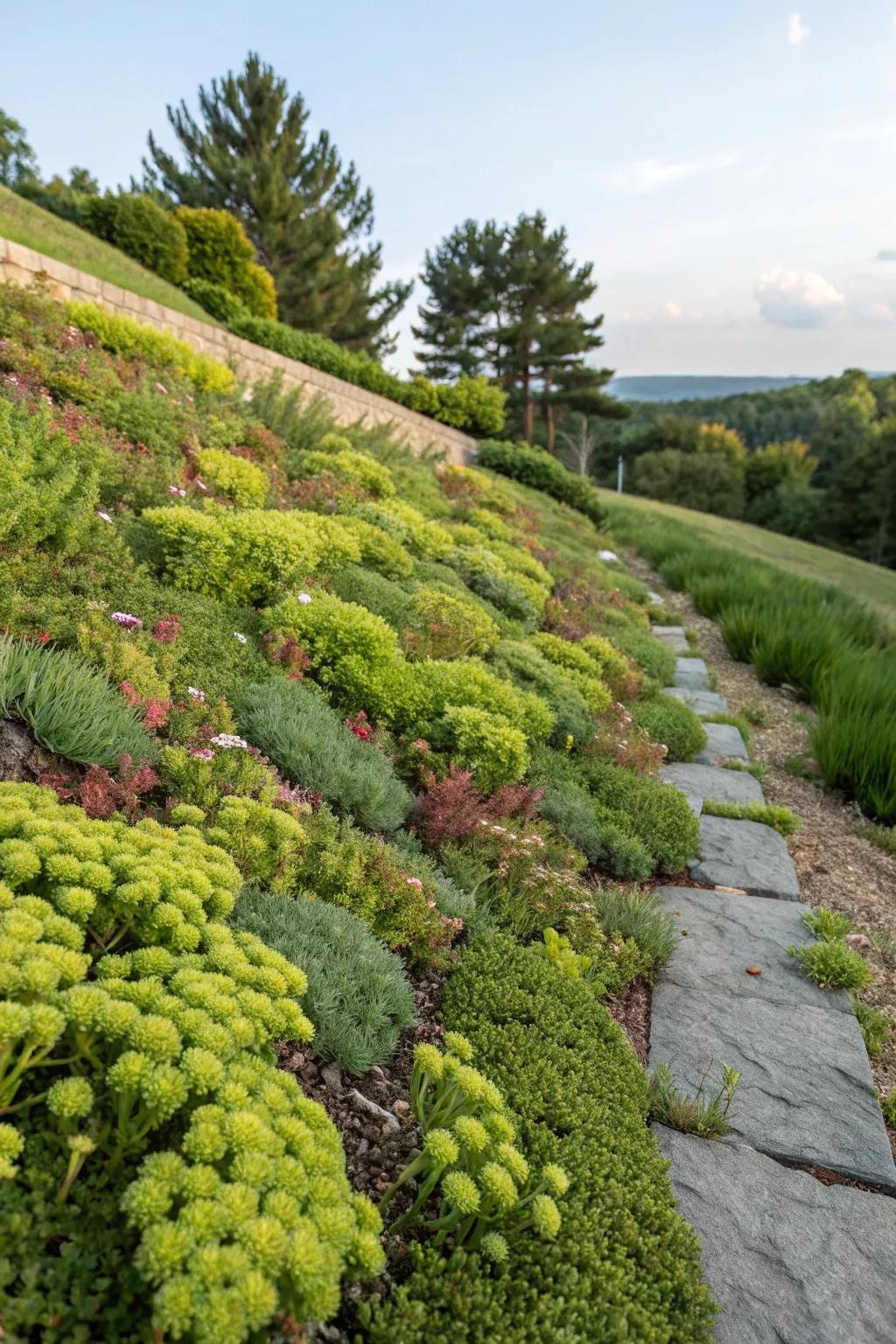
Stabilize a tricky slope with sedums for a vibrant and functional solution. Their root systems help prevent erosion while adding a splash of color.
Give these a look:
- Sedum Plant Assortment: Enhance your slope with a diverse sedum assortment, perfect for vibrant and erosion control.
- Erosion Control Mat: Secure your slope with an erosion control mat, ideal for planting sedums effectively.
- Garden Shovel Set: Plant sedums easily with a durable garden shovel set, tailored for working on slopes.
15. Sedum Border Plantings
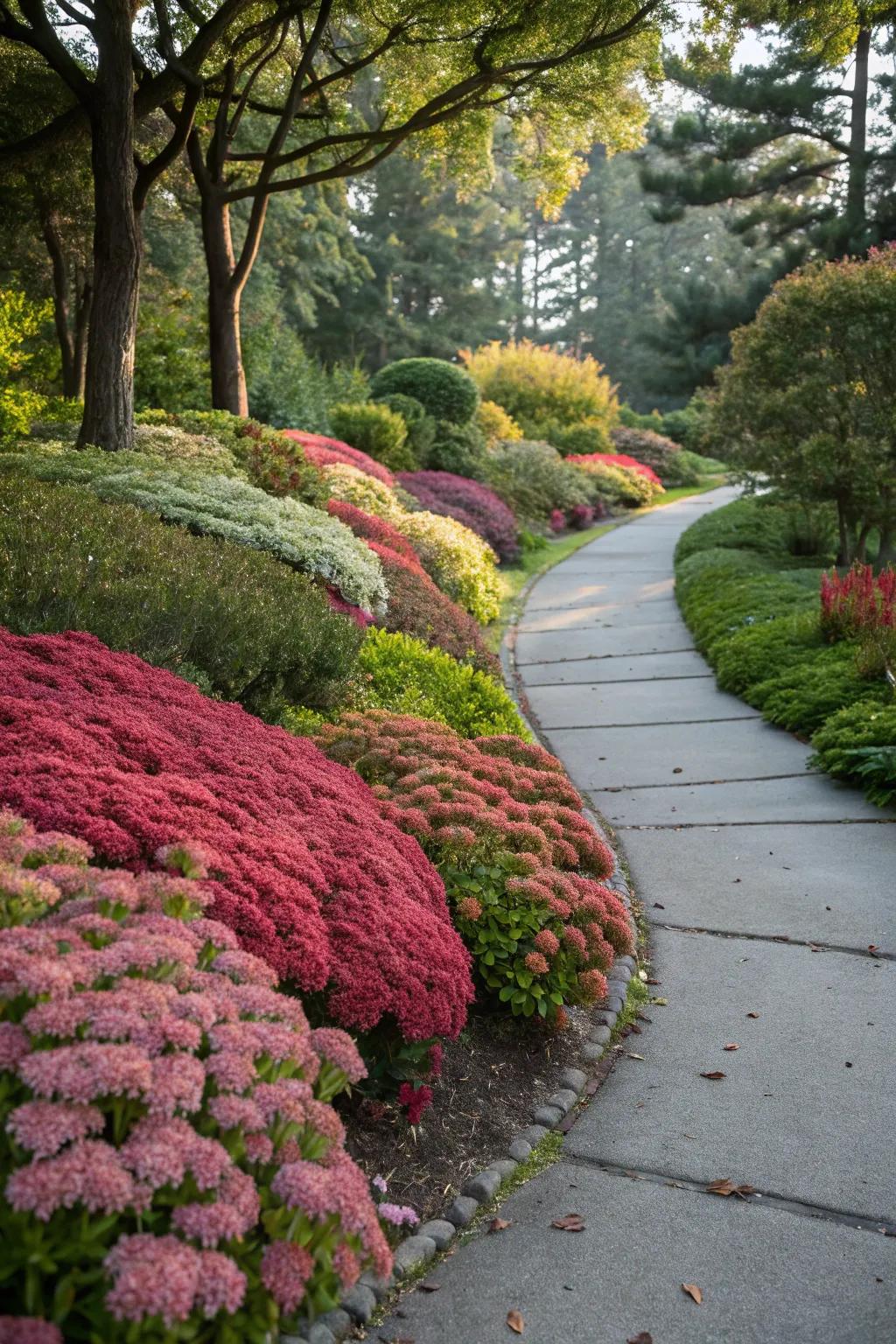
Line your garden paths with sedum for a soft, inviting border. Their varied hues create a natural frame that highlights your garden’s pathways beautifully.
Explore these options:
- Sedum Perennial Plant Collection: Enhance your garden borders with vibrant sedum varieties. Easy to plant and maintain.
- Garden Edging Kit: Define your garden paths with durable edging. Perfect for creating neat sedum borders.
- Organic Plant Fertilizer: Boost the growth of your sedums with this eco-friendly, nutrient-rich fertilizer.
16. Sedum Roof Garden
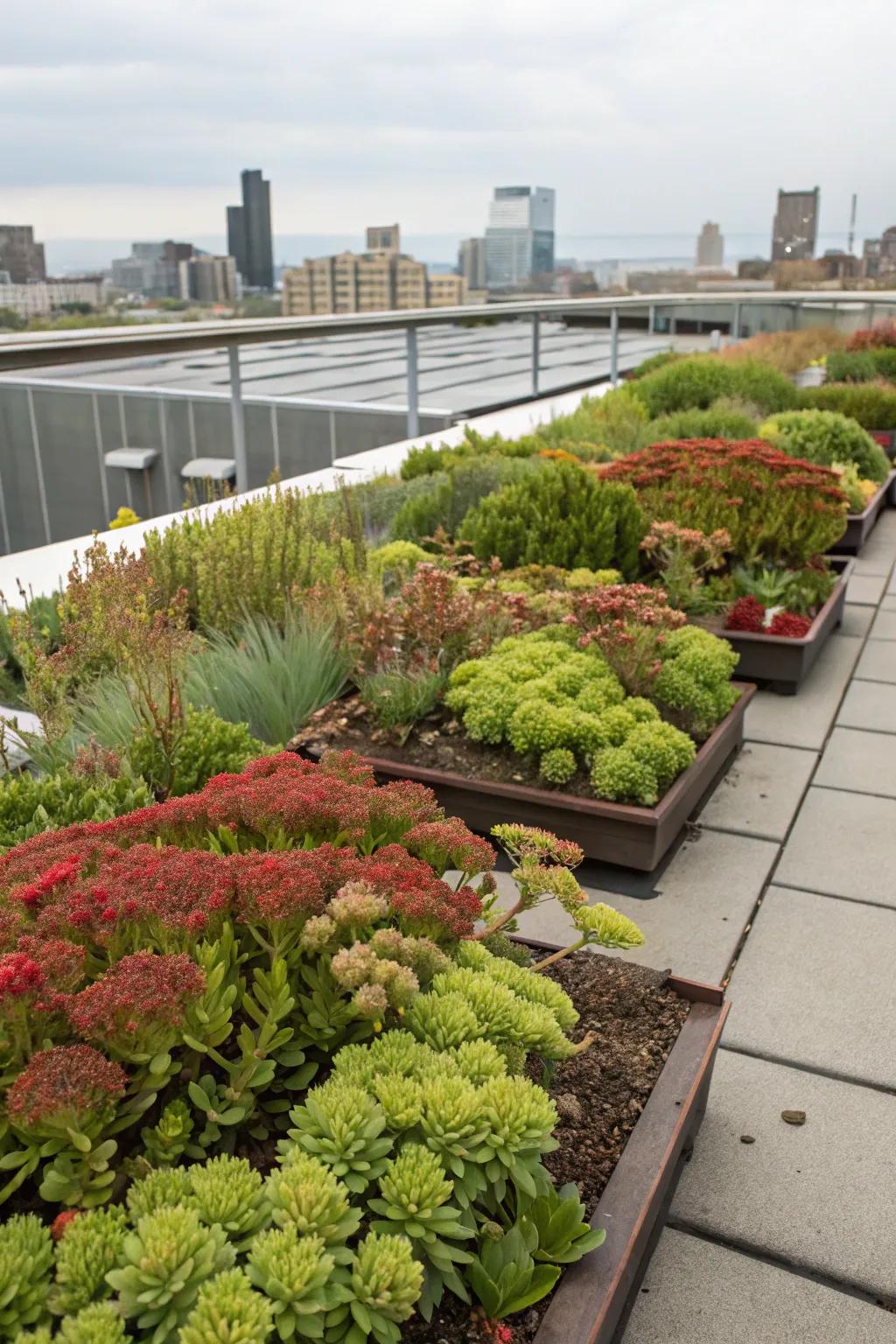
Transform a flat roof into a sedum garden for an eco-friendly retreat. This green roof not only looks great but also offers environmental benefits.
A few relevant products:
- Sedum Roof Garden Starter Kit: Get started with a sedum roof garden using this comprehensive starter kit, easy and efficient.
- Lightweight Planter Boxes: Enhance your rooftop garden with durable, lightweight planter boxes for easy arrangement.
- Eco-Friendly Roof Drainage System: Ensure proper water management on your sedum roof with this eco-friendly drainage system.
17. Sedum Window Planters
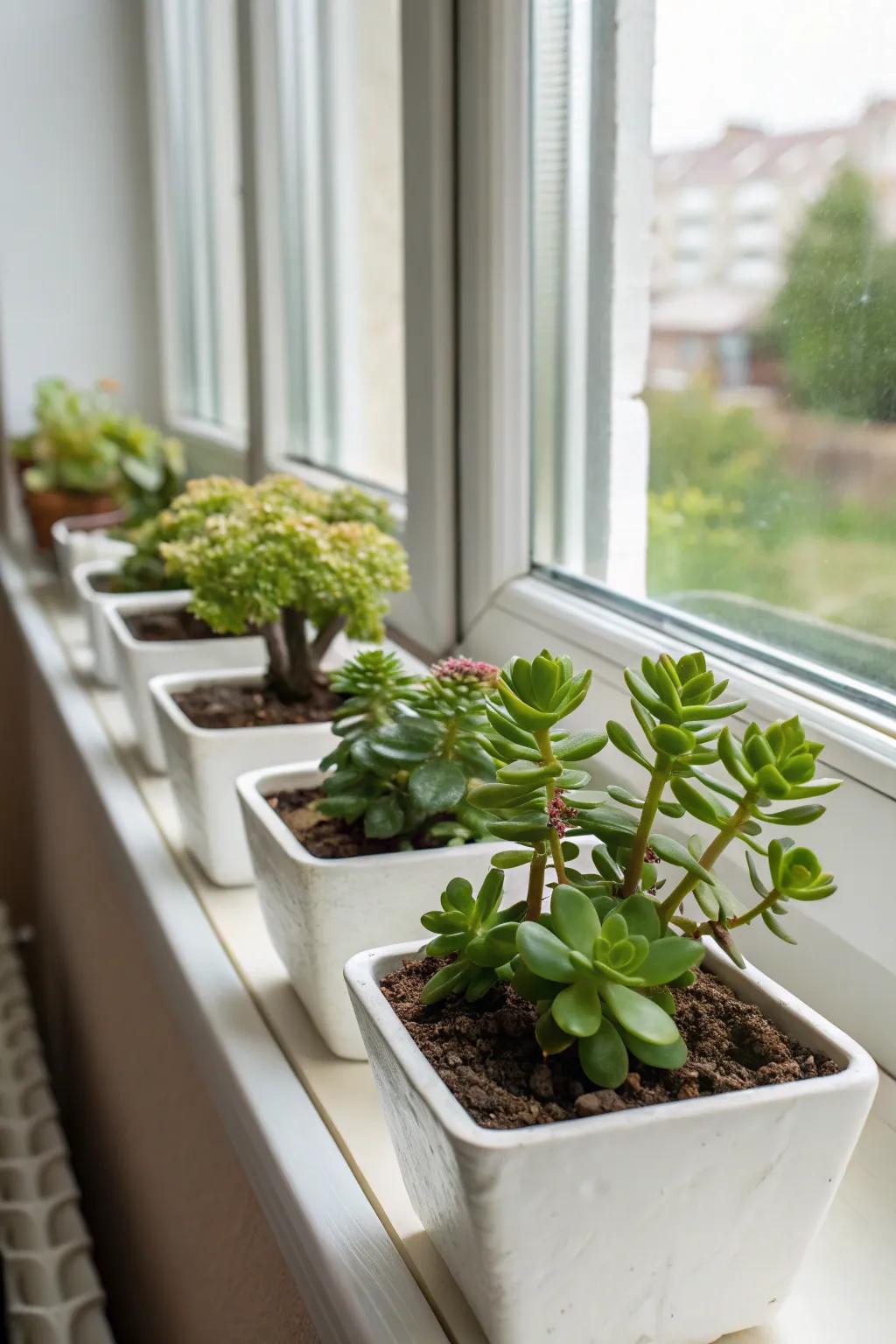
Brighten up your window sills with sedum planters. Their resilience makes them perfect for sunny spots, adding a splash of green to your view.
Check these products out:
- White Ceramic Window Planters: Enhance your window sills with elegant ceramic planters, perfect for showcasing vibrant sedum varieties.
- Sedum Starter Plant Pack: Explore diverse sedum varieties to create stunning, resilient green displays in your sunny windows.
- Sunlight Spectrum Grow Light: Ensure optimal growth for your sedum with adjustable spectrum lights, designed for indoor settings.
18. Vertical Sedum Wall
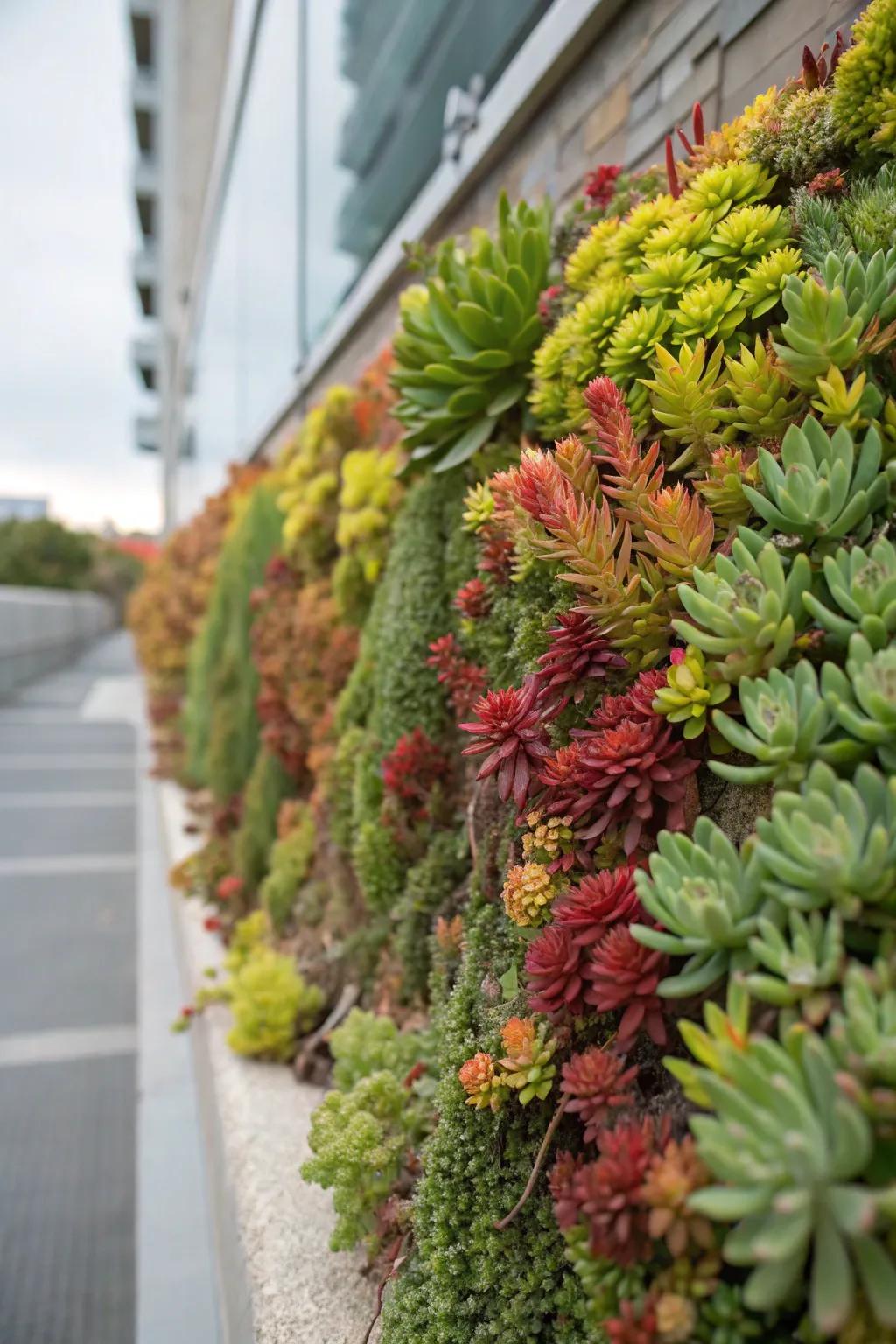
Bring your garden to new heights with a vertical sedum wall. This idea adds a stunning visual element and is a conversation starter for any outdoor gathering.
A few things you might like:
- Modular Vertical Garden Planters: Elevate your space with easy-to-install modular planters for stunning vertical garden designs.
- Sedum Matting for Vertical Walls: Create lush green walls effortlessly with pre-planted sedum matting, ideal for vertical installations.
- Automatic Drip Irrigation Kit: Ensure your vertical garden thrives with a simple, efficient automatic drip irrigation system.
19. Upcycled Tire Planters
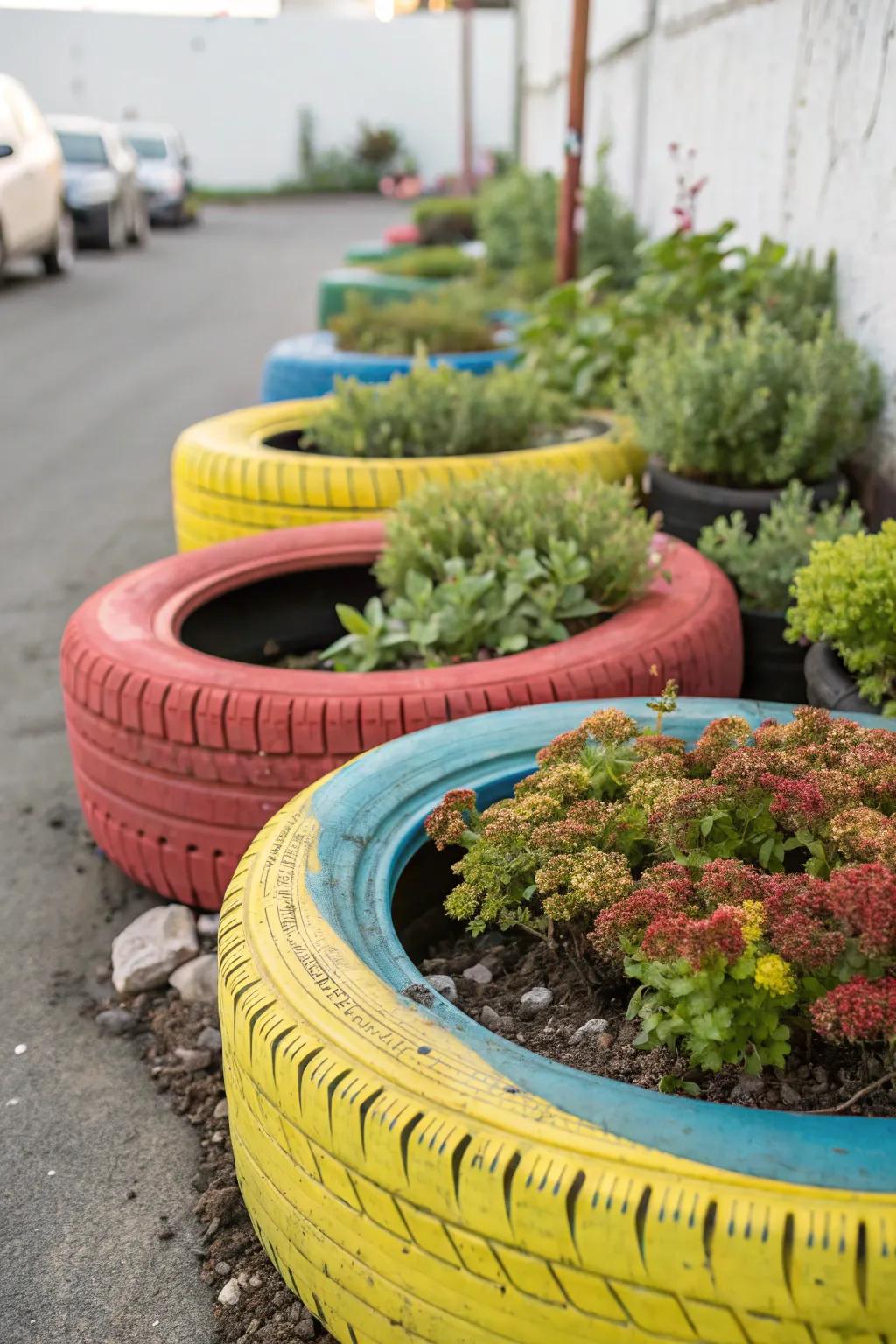
Turn old tires into unique planters filled with vibrant sedums. I love how this eco-friendly idea combines sustainability with creativity.
May just do the trick:
- Weather-resistant outdoor paint: Revitalize your planters with vibrant, long-lasting colors using this weatherproof outdoor paint.
- Soil mix for succulents: Ensure optimal growth for your sedums with specially formulated soil for succulents.
- Gardening gloves: Protect your hands while planting with durable, comfortable gardening gloves.
